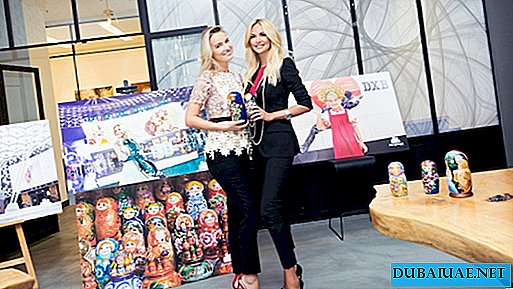Will be very honest from the beginning - in an annular motor racing I understood about the same, the average statistical LADY versed in CONFIGURATION racing car - you know, what is called IT "BOLID" that the car THIS worn on the track with full of exorbitant rates and that there is a man in NAMED AFTER MICHAEL SCHUMAHER, THE MOST IMPORTANT PLANET RACE DRIVER. Therefore, professionally evaluate what happened in Abu Dhabi from November 12 to 14 of the past year, alas, not in my power. Then, after spending three long days next to those who live and breathe car races, I can fully share it exclusively interesting and useful, that it’s all alone in the kitchen. BOLIDA, AND UNDERSTAND, AT LEAST A LITTLE BIT, THE ESSENCE OF EVENT. And ABOUT SCHUMAHER ... ABOUT HIM - FINALLY.
 About Formula 1 and Abu Dhabi Formula 1 is the World Championship in Ring Racing on Open Wheel Vehicles. That is exactly what distinguishes it from other car races. It is carried out in several stages, on the tracks of different countries. Pilots compete for the title of World Champion, and teams try to surpass others and themselves in the Constructors' Cup. The regulation and management of the championship is carried out by the International Federation of Motorsport (Federation Internationale de l'Automobile, FIA), a non-profit organization founded in 1904 to represent the interests of automobile organizations and car owners.
About Formula 1 and Abu Dhabi Formula 1 is the World Championship in Ring Racing on Open Wheel Vehicles. That is exactly what distinguishes it from other car races. It is carried out in several stages, on the tracks of different countries. Pilots compete for the title of World Champion, and teams try to surpass others and themselves in the Constructors' Cup. The regulation and management of the championship is carried out by the International Federation of Motorsport (Federation Internationale de l'Automobile, FIA), a non-profit organization founded in 1904 to represent the interests of automobile organizations and car owners.
The Emirate stage (or, in other words, the Grand Prix) of the Formula 1 World Championship, called Formula 1TM Etihad Airways Abu Dhabi Grand Prix, was held for the second time in 2010. And for the second time, it was the final stage of the season: it was in Abu Dhabi for the second year in a row that the champion and the best team were determined.
The general sponsor of the Emirate phase is the National Airline of the United Arab Emirates - Etihad Airways. In partnership with Abu Dhabi's state-owned investment company, Mubadala, it also sponsors the crowned Formula 1 team, Scuderia Ferrari, which holds the largest number of victories in the Design Cup - 16 titles, 6 of which were obtained in a row.
According to the regulations, each stage is held from Friday to Sunday (with the exception of the Monaco Grand Prix) and consists of free races, qualifications and races. The race starts on Sunday, at 14:00 local time in European countries and a little later in Asia and Australia, so that the European broadcast does not fall on the early morning. The stage in Abu Dhabi is the only championship race starting in the daytime and finishing under the cover of the evening starry sky. It is interesting that the pilots practically do not notice the change in natural light, thanks to the special artificial lighting of the route in Abu Dhabi.
About the track
The Emirate stage is held on the Yas Marina Circuit, which is only two years old. According to the idea of the chief architect, the famous German German Tilke, she was supposed to be an analogue of the circuit in Monaco, but became one of a kind.
According to the regulations, for the race, pilots must drive the number of laps, the total distance equal to or minimum exceeding 305 km. The length of the Yas Marina route is 305,361 km, the length of each circle is 5554 m. The width of the route in different sections varies from 12 to 16 m, the width of the straight start-finish line is 15 m. The route has 21 turns, 12 of which are left and 9 are right. Yas Marina is considered a difficult track, because it is one of the few where the movement is counterclockwise.
The maximum travel time of a distance may not exceed two hours. The lap time record belongs to the 2010 World Champion Sebastian Vettel, who in 2009 “flew” 5554 m in 1 minute and 40 seconds with a “tail”. Theoretical top speed is 317 km / h. The longest straight line has a length of 1173 m, and this is the longest straight line of all Formula 1 tracks.
About physics
Fireballs are almost airplanes. The most important characteristic in both cases is aerodynamics, which make them related and, at the same time, make them extremely different. Formula 1 cars are designed so that they move at high speed without taking off the ground, while airplanes must go upward, working with the same natural forces - drag force and downforce.
It is in the structure of the hull and wings that the difference lies. The structure of the car body is constantly being improved to improve aerodynamics: the body must be as streamlined and smooth as a bullet. It is interesting that the Boeing corporation borrowed the hull technologies that Formula 1 used in its new 787 Dreamliner: the aircraft fuselage is built as one, like a race car.
An airplane has wings, and a car has wings. The structure of the wing of the aircraft contributes to take-off, while in a car, the wings perform the exact opposite function - they press it to the track, which is why they are called "wing wings". They are almost identical in shape: it is enough to turn the usual wing of the plane with the front part down and you get a wing. Something like this…
Working with frontal air resistance, both cars move in the opposite direction: the plane - up and forward, the car - down and forward. At high speed, the aircraft’s generated lift allows you to lift 560,000 kg of Airbus A380-800 into the air. At the same time, at a speed of 300 km / h, the car presses a force of almost 2000 kg to the ground! The wings of a Ferrari 10 are capable of creating downforce up to 500 kg, while the car itself with a pilot weighs only 620 kg. In simple words, the downforce of the car will allow it to move upside down on the ceiling.
Hundreds of engineers are working to win the speed race: the design of the wing and the car itself must be so perfect that the optimal downforce does not cause an increase in drag force that impedes high-speed movement. The aerodynamic characteristics of the car will be customized for each track. For example, the Yas Marina track is divided into three sectors, each of which requires a different downforce for optimal passage.
If you remove the wings from the car, it will move much faster, but the lack of "sticking" to the track will not allow it to optimally enter the corners and stay on the track. On Yas Marina, pilots have to go through a series of right-left turns to 90 degrees!
The Formula 1 car has a phenomenal acceleration: from zero to 300 km / h it can accelerate in less than 9 seconds. From zero to 160 km / h and back to zero, the car can go in just 5 seconds. Braking and acceleration create enormous pressure on the pilot of the car: if the astronaut experiences overload in 3G when leaving the ground, then the pilot of the car is all 5G, while most people are not able to go through overload in 4G. Tires are also of great importance. Choosing the right composition, the most suitable for the track, weather and car, is quite a challenge. Teams spend a lot of time on this. The key features here are durability, light weight and traction.
About the rules
The rules of "Formula 1" are very complex, and to understand their essence is not immediately possible. According to my observations of the audience, only a few understand the meaning of what is happening on the track and in the season. Therefore, we restrict ourselves to the main and interesting, for "dummies".
From each team at each stage two riders are exposed. The coloring of the cars should be the same, only their numbers are different. For several decades, the number 1 has been won by the World Champion of the previous season, regardless of whether he remained in his team or moved to another. Number "2" is his teammate, even if last season he was far from "silver". In the history of “Formula 1” there were situations when the pilot spoke at number “0” due to the fact that the champion irrevocably left the championship. However, in the Formula 1 races there is no and never was a car number "13".
Points in the Cup of designers are awarded to the first 10 pilots who arrived at the finish line and their teams. The winner of the championship is determined in the overall standings of points scored during the season, and the pilot who comes to the finish line in the finals not always becomes the pilot. The pilot and the team are one. The pilot’s personal skills do not guarantee victory: the design and construction of fireballs is a whole high-tech automotive industry in which engineering geniuses tirelessly work. The task of the pilot is to masterfully control. The team’s task is to create the best car, set it up correctly, maintain it and so on. The team creates a chassis for their car, while the motor can be supplied by a third-party manufacturer. By the way, the “formula” in the name of the race means a set of rules that the cars of all participants must comply with.
Each team has dozens of service engineers who work with the car before, during and after the races. By the way, Formula 1 teams are also called "stables" due to the fact that the first boxes for Formula 1 cars were the old stables in England. As for the monetary reward, it is high and divided among all member teams, depending on merit. The exact numbers are kept secret, but they say that the winning team gets somewhere around USD 80 million, and 10th place is about USD 30 million. There is something to fight for! This time in the individual competition, the young and the most remote German Sebastian Vettel from the Red Bull team, which, in turn, took the Cup of designers, became the best.
About pilots and Schumacher

Cars are everything, and people are even more. To become a Formula 1 pilot requires a lot, not only talent, but also big, very big money. Pilots usually start with karting and move up. Already at the go-kart phase in the season you need to spend from USD 20 to 150 thousand. As long as the pilot reaches the breeders who notice him and value him for "investing", he will have to spend hundreds of thousands, or even millions of dollars of his own or from good sponsors, if any.
If the breeders of the rider do not notice themselves, he will have to speak for his hard-earned money and wait in the wings. So talent is not always enough here. Therefore, pride in our Vitaly Petrov, the first Russian rider to compete in Formula 1, whose name so often sounded on the highway in Abu Dhabi, bursted us so much. Speaking this season for the Renault team, Vitaliy on Yas Marina kept Fernando Alonso himself, who was poorly performing and our Petrov was worth the championship.
Sixth place in the race in Abu Dhabi and 13th of the season is a great achievement! As for Schumacher ... There was a feeling that he was simply not noticed by anyone. Times are changing, and now we need to remember the names of new heroes - Sebastian Vettel, Lewis Hamilton, Jenson Button, and, so be it, Vitaly Petrov to talk about next year in the stands of the Emirate Formula 1 stage in Abu Dhabi. See you next fall!









